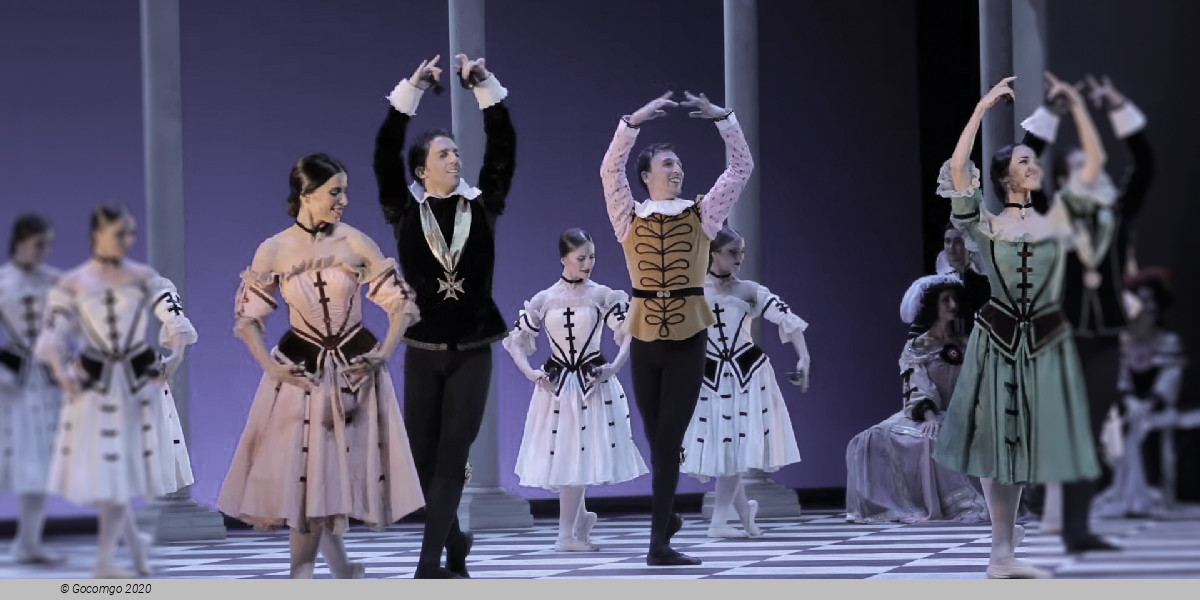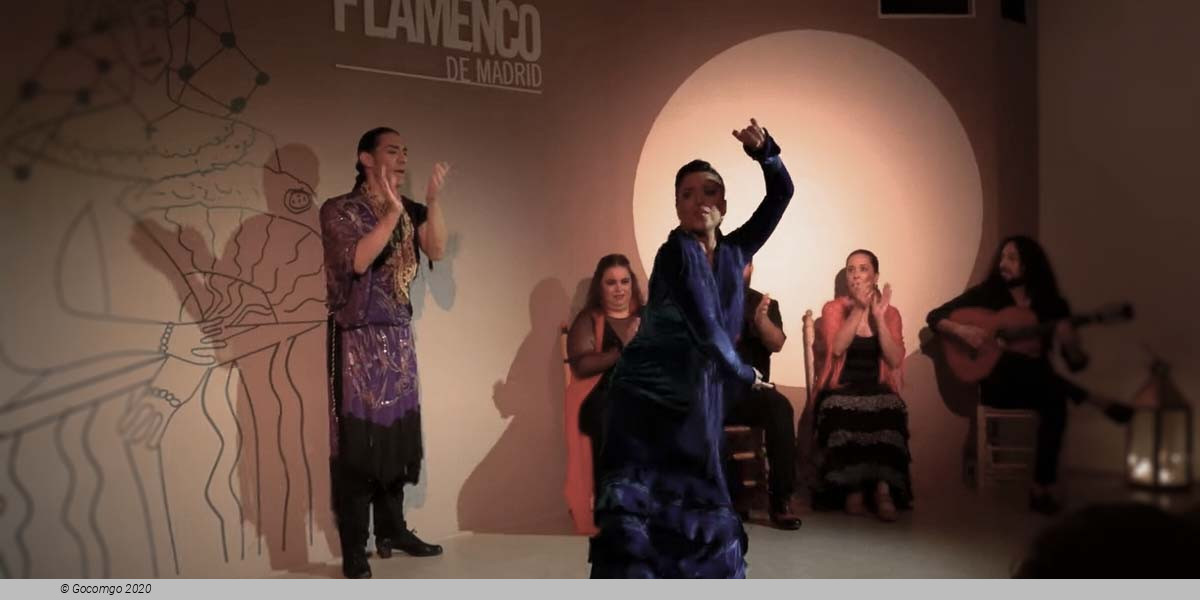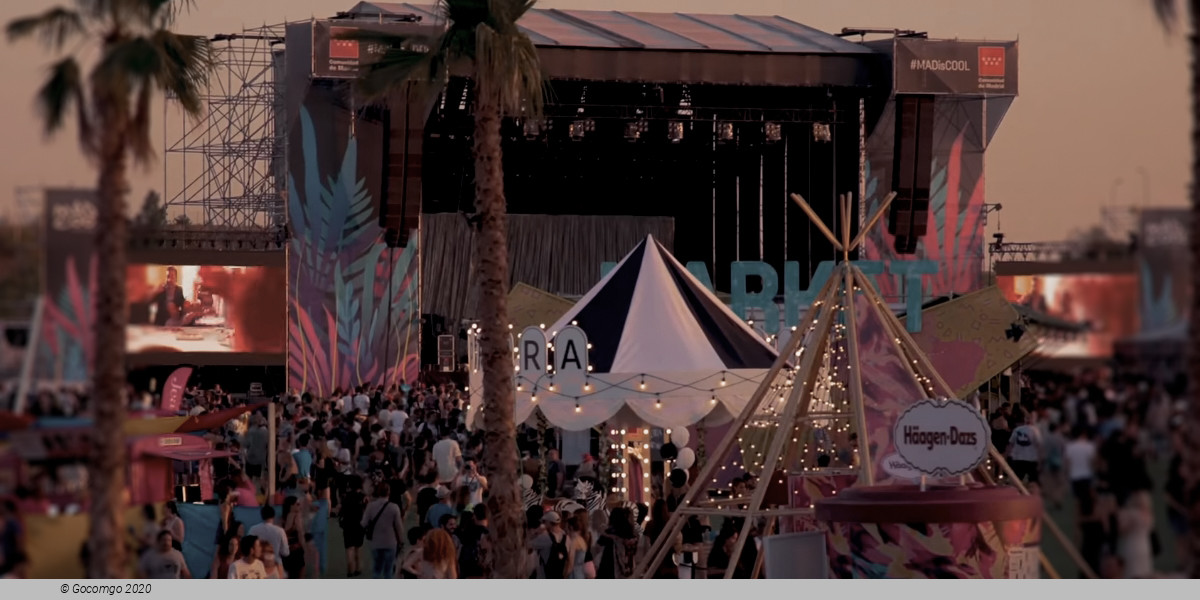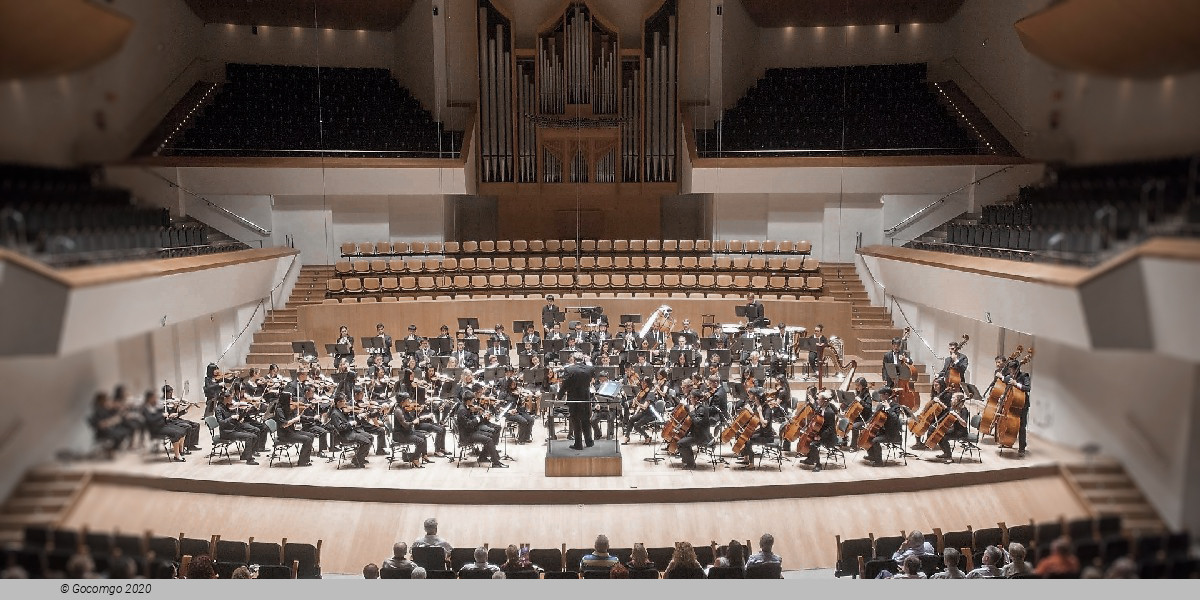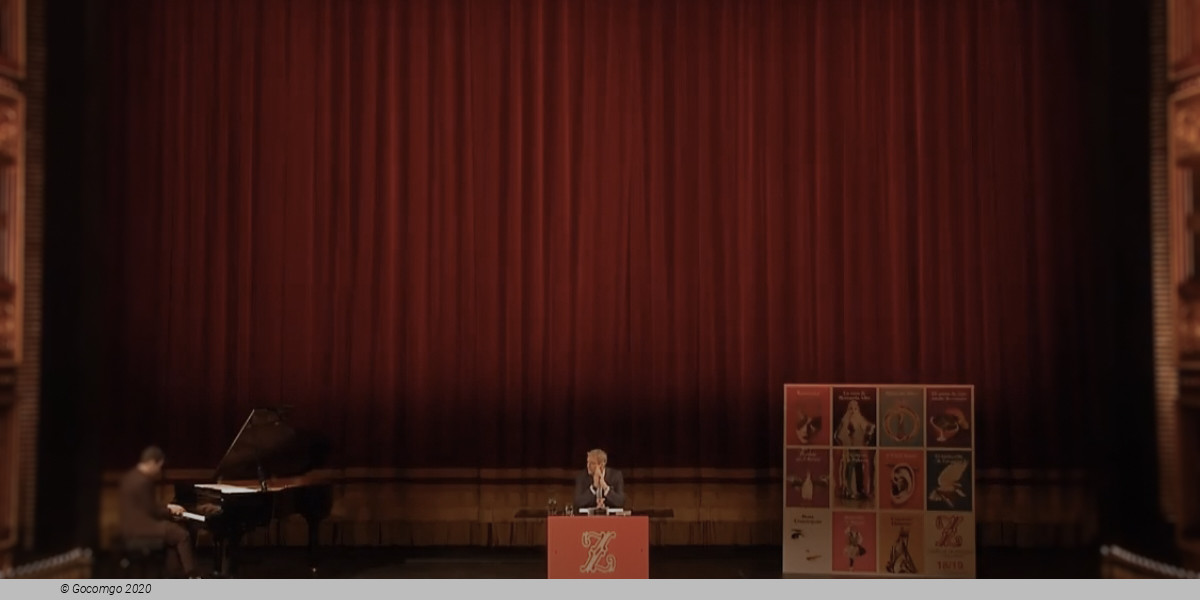Venues in Madrid
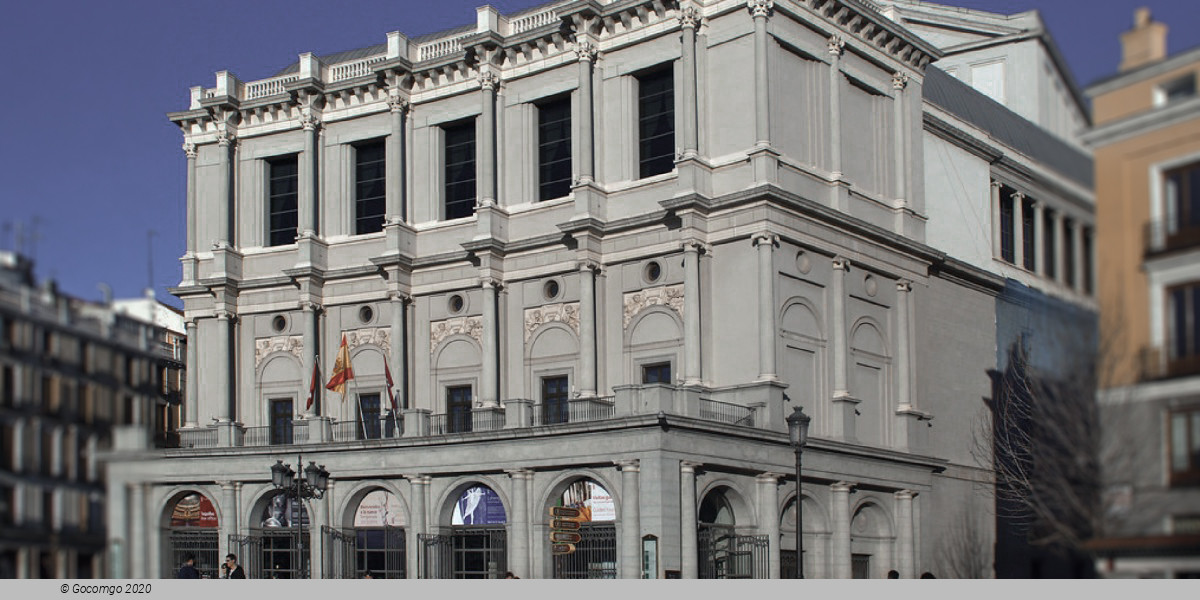
Madrid is the capital and most populous city of Spain, which lies on the River Manzanares in the central part of the Iberian Peninsula. While Madrid possesses modern infrastructure, it has preserved the look and feel of many of its historic neighbourhoods and streets. Its landmarks include the Plaza Mayor, the Royal Palace of Madrid; the Royal Theatre with its restored 1850 Opera House; the Buen Retiro Park, founded in 1631; the 19th-century National Library building (founded in 1712) containing some of Spain's historical archives; many national museums, and the Golden Triangle of Art, located along the Paseo del Prado and comprising three art museums: Prado Museum, the Reina Sofía Museum, a museum of modern art, and the Thyssen-Bornemisza Museum, which complements the holdings of the other two museums. Cibeles Palace and Fountain has become one of the monument symbols of the city.
Madrid is considered one of the top European destinations concerning art museums. Best known is the Golden Triangle of Art, located along the Paseo del Prado and comprising three major museums: the Prado Museum, the Reina Sofía Museum, and the Thyssen Bornemisza Museum.
The Prado Museum (Museo del Prado) is a museum and art gallery that features one of the world's finest collections of European art, from the 12th century to the early 19th century, based on the former Spanish Royal Collection. It has the best collection of artworks by Goya, Velázquez, El Greco, Rubens, Titian, Hieronymus Bosch, José de Ribera, and Patinir as well as works by Rogier van der Weyden, Raphael Sanzio, Tintoretto, Veronese, Caravaggio, Van Dyck, Albrecht Dürer, Claude Lorrain, Murillo, and Zurbarán, among others. Some of the standout works exhibited at the museum include Las Meninas, La maja vestida, La maja desnuda, The Garden of Earthly Delights, The Immaculate Conception and The Judgement of Paris.
The Reina Sofía National Art Museum (Museo Nacional Centro de Arte Reina Sofía; MNCARS) is Madrid's national museum of 20th-century art and houses Pablo Picasso's 1937 anti-war masterpiece, Guernica. Other highlights of the museum, which is mainly dedicated to Spanish art, include excellent collections of Spain's greatest 20th-century masters including Salvador Dalí, Joan Miró, Picasso, Juan Gris, and Julio González. The Reina Sofía also hosts a free-access art library.
The Thyssen-Bornemisza Museum (Museo Thyssen-Bornemisza) is an art museum that fills the historical gaps in its counterparts' collections: in the Prado's case, this includes Italian primitives and works from the English, Dutch, and German schools, while in the case of the Reina Sofía, the Thyssen-Bornemisza collection, once the second largest private collection in the world after the British Royal Collection, includes Impressionists, Expressionists, and European and American paintings from the second half of the 20th century, with over 1,600 paintings.
The National Archaeological Museum of Madrid (Museo Arqueológico Nacional) shows archaeological finds from Prehistory to the 19th century (including Roman mosaics, Greek ceramics, Islamic art and Romanesque art), especially from the Iberian Peninsula, distributed over three floors. An iconic item in the museum is the Lady of Elche, an Iberian bust from the 4th century BC. Other major pieces include the Lady of Baza, the Lady of Cerro de los Santos, the Lady of Ibiza, the Bicha of Balazote, the Treasure of Guarrazar, the Pyxis of Zamora, the Mausoleum of Pozo Moro or a napier's bones. In addition, the museum has a reproduction of the polychromatic paintings in the Altamira Cave.
The Royal Academy of Fine Arts of San Fernando (Real Academia de Bellas Artes de San Fernando) houses a fine art collection of paintings ranging the 15th to 20th centuries. The academy is also the headquarters of the Madrid Academy of Art.
CaixaForum Madrid is a post-modern art gallery in the centre of Madrid, next to the Prado Museum.
The Royal Palace of Madrid, a massive building characterised by its luxurious rooms, houses rich collections of armours and weapons, as well as the most comprehensive collection of Stradivarius in the world. The Museo de las Colecciones Reales is a future museum intended to host the most outstanding pieces of the Royal Collections part of the Patrimonio Nacional.
The Museum of the Americas (Museo de América) is a national museum that holds artistic, archaeological, and ethnographic collections from the Americas, ranging from the Paleolithic period to the present day.
Other notable museums include the National Museum of Natural Sciences (the Spain's national museum of natural history), the Naval Museum, the Convent of Las Descalzas Reales (with many works of Renaissance and Baroque art, and Brussels tapestries inspired by paintings of Rubens), the Museum of Lázaro Galdiano (housing a collection specialising in decorative arts, featuring a collection of weapons that features the sword of Pope Innocent VIII), the National Museum of Decorative Arts, the National Museum of Romanticism (focused on 19th century Romanticism), the Museum Cerralbo, the National Museum of Anthropology (featuring as highlight a Guanche mummy from Tenerife), the Sorolla Museum (focused in the namesake Valencian Impressionist painter, also including sculptures by Auguste Rodin, part of Sorolla's personal effects), or the History Museum of Madrid (housing pieces related to the local history of Madrid), the Wax Museum of Madrid, the Railway Museum (located in the building that was once the Delicias Station).
Major cultural centres in the city include the Fine Arts Circle (one of Madrid's oldest arts centres and one of the most important private cultural centres in Europe, hosting exhibitions, shows, film screenings, conferences and workshops), the Conde Duque cultural centre or the Matadero Madrid, a cultural complex (formerly an abattoir) located by the river Manzanares. The Matadero, created in 2006 with the aim of "promoting research, production, learning, and diffusion of creative works and contemporary thought in all their manifestations", is considered the third most valued cultural institution in Madrid among art professionals.
The Teatro Real is the main opera house in Madrid, located just in front of the Royal Palace, and its resident orchestra is the Madrid Symphony Orchestra. The theatre stages around seventeen opera titles (both own productions and co-productions with other major European opera houses) per year, as well as two or three major ballets and several recitals.
The Auditorio Nacional de Música is the main venue for classical music concerts in Madrid. It is home to the Spanish National Orchestra, the Chamartín Symphony Orchestra and the venue for the symphonic concerts of the Community of Madrid Orchestra and the Madrid Symphony Orchestra. It is also the principal venue for orchestras on tour playing in Madrid.
The Teatro de la Zarzuela is mainly devoted to Zarzuela (the Spanish traditional musical theatre genre), as well as operetta and recitals. The resident orchestra of the theatre is the Community of Madrid Orchestra.
The Teatro Monumental is the concert venue of the RTVE Symphony Orchestra.
Other concert venues for classical music are the Fundación Joan March and the Auditorio 400, devoted to contemporary music.


